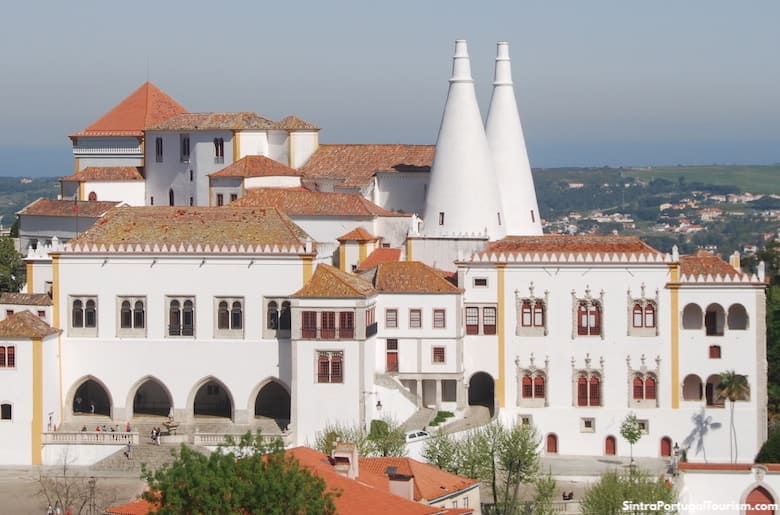
The National Palace seen from the Miradouro da Ferraria viewpoint on Rua da Ferraria
This medieval palace, which stands in the center of Sintra and is also known as Palácio da Vila ("The Town Palace"), dates back to the 9th century, when the Moorish governors built their residence on the site. It became the official home of King João I (the father of Prince Henry the Navigator) in the 14th century, and is one of the few medieval palaces in the world that survives to this day practically intact. It was used by the Portuguese royal family until the end of monarchy in 1910, although by that time the king preferred to stay in Pena Palace.
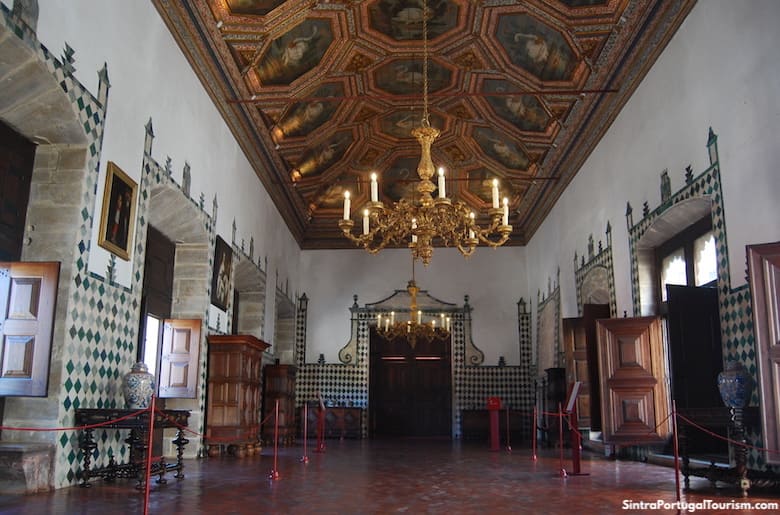
The Swans Hall is one of the main rooms of the palace
Both inside and out it’s a mix of medieval, Gothic, Manueline, and Renaissance architecture. Its kitchen's gigantic 33m(108ft)-high conical chimneys, added in the 1300s, are Sintra icons, while much of the interior and the windows on the façade date from a later period, the early 1500s, when King Manuel I decided to beautify the building. It was at this time that the most grandiose room, the “Sala dos Brasões” (“Coat-of-Arms Room”), was built, which later, in the 18th century, was lined with several extraordinary tile panels depicting bucolic and hunting scenes. It’s one of the country’s most important collections of baroque tiles, created by one of the leading artists of the time, known simply as Master P.M.P.
Older tiles cover the walls of other rooms, making up the most important set of Mudejar (Moorish-Iberian) tiles in the world.
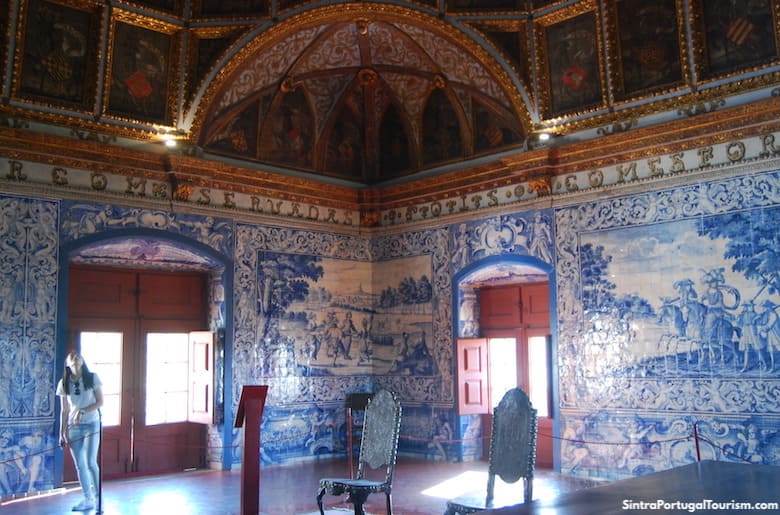
The grandiose Coat-of-Arms Room
Another highlight is the tile-covered Swans Hall, with a ceiling from the late 1500s painted with the swans that gave it its name. That’s followed by the Central Courtyard, with a twisted column at the center and faced by the rococo “Grotto of the Baths,” completely covered in tile panels and stucco ornamentation representing the “Creation of the World,” the four seasons, and mythological themes.
Then comes the Magpies Room, with a Renaissance fireplace made of marble and a ceiling divided into 136 triangular panels depicting magpies.
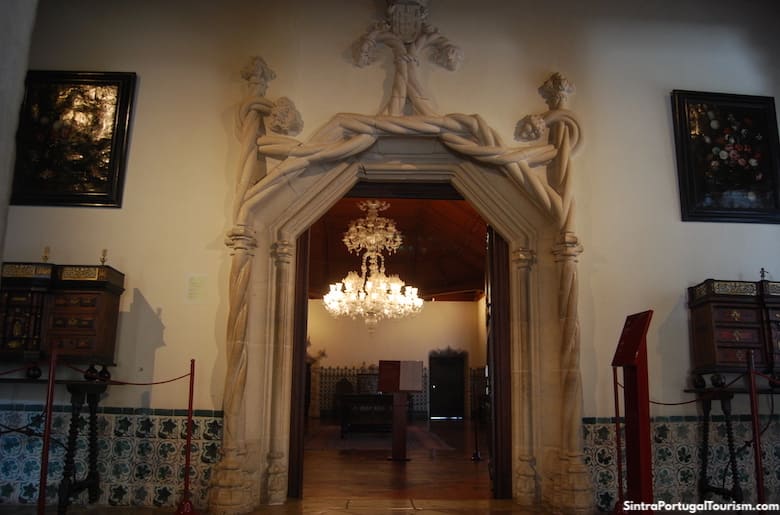
Manueline doorway inside the palace, added in the 16th century
Next is King Sebastião’s Room, which in the 16th century replaced gilded decoration on the walls with relief-patterned tiles.
Even more tiles cover the walls of the Arab Room, these dating from the 1400s. At the center is a fountain, typical of residences in the Arab world, and probably inspired by the original Moorish building.
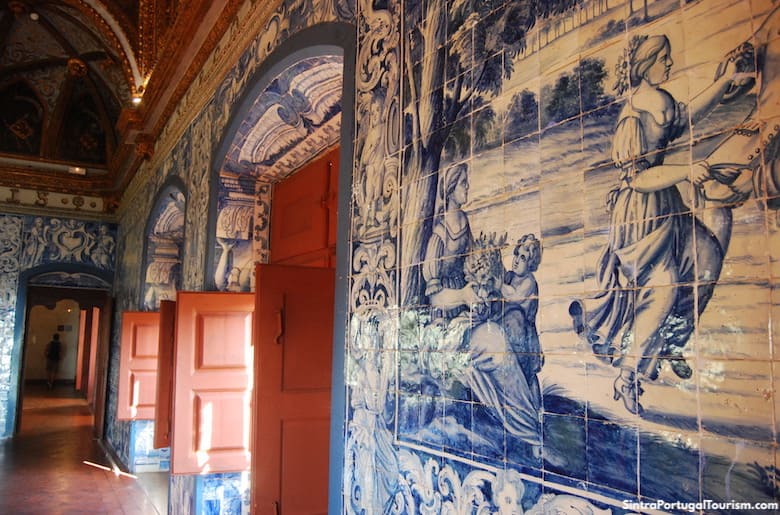
The palace has one of the most important collections of baroque tiles in Portugal and the world
In the kitchens, in addition to the enormous chimneys that are unique in the world, are utensils used to cook the large animals consumed in the royal banquets.
Finally, there’s a 14th-century chapel dedicated to the Holy Spirit, depicted as doves in the fresco paintings on the walls.
From the terrace in the back is a view over Sintra, crowned by the Moorish Castle.
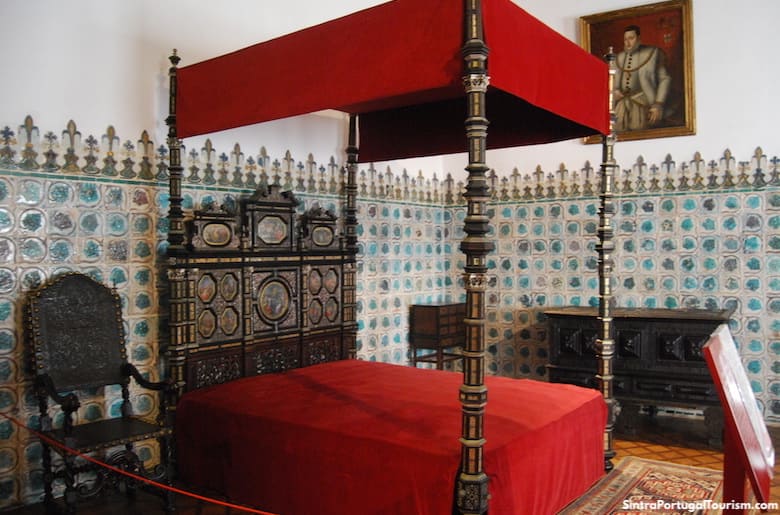
One of the bedrooms of the palace
A National Monument since 1910, the Sintra National Palace is part of the “cultural landscape” that was classified by UNESCO as World Heritage in 1995, and is also a member of the Network of European Royal Residences.
Across the building is a pillory, whose origins go back to the 16th century. It was destroyed in 1854, but was eventually restored.
There’s a perfect postcard view of the palace from the Miradouro da Ferraria viewpoint, on Rua da Ferraria, which overlooks the center of Sintra and the landscape to the north.
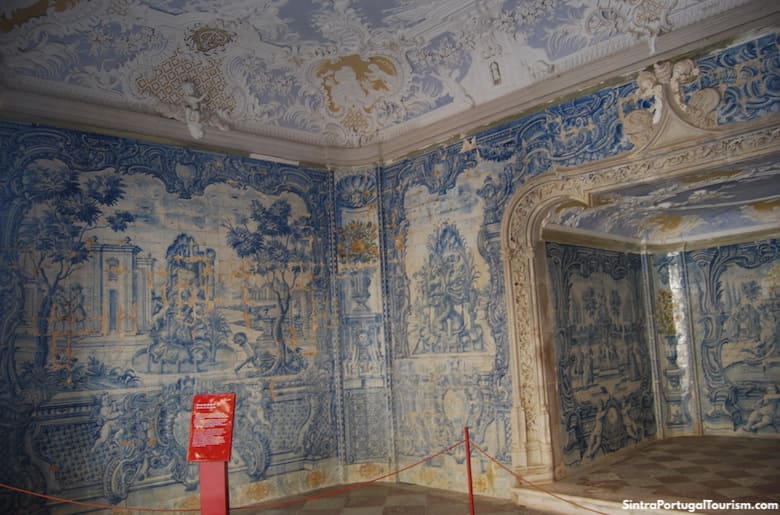
The Grotto of the Baths, an 18th-century addition to the palace
Visiting the Sintra National Palace
The palace opens daily from 9:30am to 7pm. It’s much less crowded than Pena, so you don’t have to rush to it. It’s recommended that you make it your last stop in town, before heading back to the train station if you’re visiting Sintra on a day trip.
A visit usually lasts about one hour.
How to Get to the Sintra National Palace
The Sintra National Palace is located about a 10-minute walk from the train station, down the scenic road known as Volta do Duche.
Admission and Tickets to the Sintra National Palace
Admission is €10 or adults and €8.50 for children up to the age of 17 (there’s a 10% discount with the Lisboa Card).
You may buy your ticket online: Skip-the-Line Ticket to the Sintra National Palace
Opens every day
Attractions Nearby
Around the corner from the palace is the News Museum, while the palaces of Seteais and Quinta da Regaleira are within walking distance. The Natural History Museum is right behind it, while Vila Sassetti is about a 10-minute walk up the road.